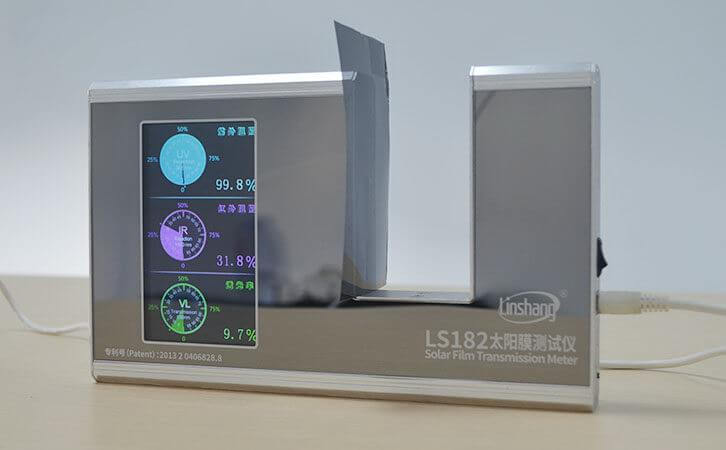Measuring Principle of Window Tint Light Meter
Solar film is widely used in the automotive glass industry, because it has the function of blocking ultraviolet rays, heat and strengthening the crack resistance of automotive glass. In addition, the stick-film glass of the car has a one-way perspective function, which can protect personal privacy. Of course, all of the above are based on high-quality solar films. Solar film transmittance is usually measured using a window tint light meter.
So what measurement principle does the window tint light meteruse to detect the light transmittance of the solar film?
1.Spectral distribution of solar radiation
There is electromagnetic radiation in sunlight, of which 99.9% of the energy is concentrated in the infrared region, visible light and ultraviolet light. The total radiant energy of the sun in visible light accounts for about 50%, the infrared region accounts for about 43% and the solar radiant energy in the ultraviolet region is very small, accounting for about 7% of the total energy.
The solar spectrum can be divided into three bands. The wavelength shorter than 0.38μm is called the ultraviolet band, the wavelength between 0.38μm-0.76μm is called the visible light band. And the wavelength longer than 0.76μm is called the infrared band. The infrared band can also be subdivided into a near-infrared band with a wavelength of 0.76 μm-2.5 μm and a far-infrared band with a wavelength of 2.5 μm-1000 μm.
2. Selection of simulated infrared light source for window tint light meter
During the process of solar radiation hitting the ground, the spectrum changed. The irradiance of far-infrared rays with a wavelength exceeding 2.5 μm at the boundary of the atmosphere is already a little. Coupled with the strong absorption of carbon dioxide and water vapor molecules in the atmosphere, the irradiance reaching the ground is already very a little, so only infrared radiation with a wavelength of 0.75 μm to 2.5 μm can reach the ground.
When measuring the same automotive film sample, the infrared transmittance of each band in the range of 750nm-2500nm is basically the same. Therefore, the combination of two infrared light-emitting diodes with a wavelength in the range of 750nm-1000nm as an analog light source, we can basically evaluate the infrared isolation effect of automotive films. Because the measurement data of the window tint light meter at 950nm and 1400nm peaks have relatively large differences, we usually choose the peak wavelengths of 940nm and 1400nm.
3.Measurement principle of infrared isolation effect
The quantitative detection of the infrared isolation effect follows the law of light absorption. The Lambert-Beer law is a beam of monochromatic light is irradiated on a uniform medium. And the absorption of light by the uniform medium is proportional to the thickness of the uniform medium and the concentration of the light-absorbing substance. Therefore, when the incident light intensity of the window tint light meter and the simulated infrared light source is constant, the attenuation of light energy depends on the concentration and thickness of the medium and the size of the signal detected at the receiving end changes regularly with different film materials. When the window tint light meter simulates the infrared light source shining on the car film, a part of the light will be reflected by the medium surface and a part of the light will be absorbed by the medium.
Therefore, the window tint light meter uses a pulsed light emitting diode as a light source. The photovoltaic cell as a receiving element and a photoelectric conversion element. Finally, the detected electrical signals are displayed in digital form.
The above is the measurement principle of the window tint light meter . We hope through the above introduction, you have better understanding about the window tint light meter principle.
- Choosing the Right Window Tinting Film
- Window Tint Meter | Pros and Selection Methods of Architectural Membrane
- Advantages of LS110H and LS110A Split Transmission Meter
- Best Choice:LS182 Solar Film Transmission Meter
- Solar Power Lightens Up with Thin-Film Technology
- What is the Solar Heat Gain Coefficient Ratings (SHGC)
